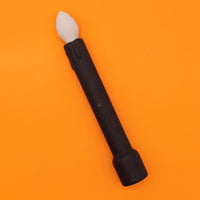

Sexual Wellness
Created on 13/12/2017
Updated on 13/10/2022
Most people with vaginas can make themselves come in under ten minutes. Yet when it comes to having sex with a partner, only about 50% of women orgasm consistently while men almost always orgasm. If it’s a first-time hookup, women only come 11% of the time. Now there’s a fact that will make you feel about as cheerful as the Grinch who stole Christmas.
The orgasm gap is likely the product of our cultural norms and expectations around sex. It is not the natural consequence of women simply not needing or not caring about orgasms. One study surveying more than six thousand women found that most women feel it is rather important to orgasm during partnered sex.
If you’ve got your masturbation routine on lock but are still struggling to come when you’re in bed with another cute human being, here are some tips to help get you there.
Sex Technique
Orgasms are typically produced by stimulating nerves in the pelvic region that roughly correspond to the clitoris, the vagina, and the cervix. That being said, most women need some type of clitoral stimulation to achieve orgasm. Having your partner start from there can greatly increase your chance of orgasming.



















































